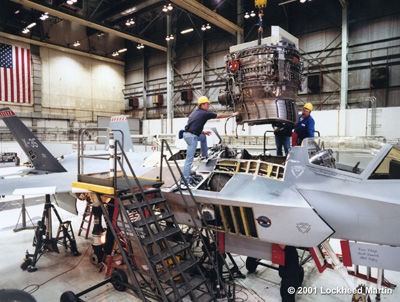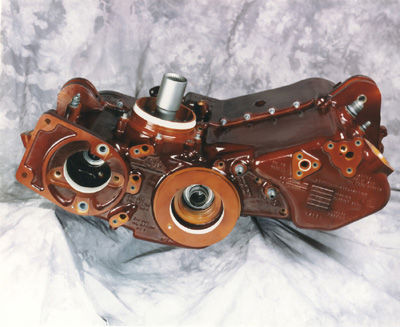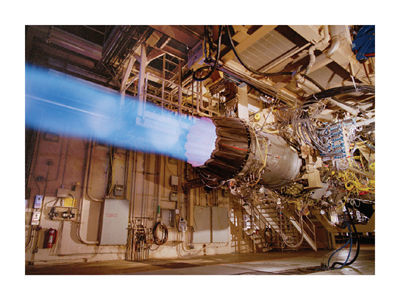"The long-term outlook for air travel is positive," Boeing’s report says. "The fundamentals of economic development, globalization, and the need for people to travel will be strong in the coming decades."
The growth of the commercial airline market and the need for airlines to replace aging fleets is what’s driving the demand for newer and larger aircraft that can fly farther, such as the Airbus A380. New airplanes mean new engines and new parts for companies like Arrow Gear, which manufactures spiral bevel gears for the Airbus A380.
In addition to the recovery of the commercial airplane manufacturing business, the demand for military aircraft is very strong. One of the things driving that demand is the United States’ war on terrorism.
Purdy Corp. of Manchester, CT, manufactures spiral bevel gears, curvic couplings and splined shafts for helicopter drive systems and aircraft engines. According to Barry R. Noonan, Jr., VP sales, the U.S. military operations in the Middle East have driven demand for Purdy’s products.
"Given the war effort with gears and gearboxes coming out of the theater with less life...this has placed a never-seen-before demand for new parts, and if available, repairables," Noonan says.
In addition to the war effort, there are a number of high-profile military aircraft development projects underway, including the Joint Strike Fighter program, the V-22 Osprey tilt-rotor program and other projects, all of which require precision gears.
Both Arrow Gear and Purdy manufacture parts for the Joint Strike Fighter program. The F-35 Joint Strike
Fighter is a supersonic, multi-role stealth fighter designed to replace a number of aging fighter and strike aircraft. Assembly of the first F-35 was completed in February, and its first flight will take place later this year.
The F-35 is designed to be fitted with either of two propulsion systems: the F135 engine from Pratt & Whitney or the F136 engine from GE/Rolls-Royce. Gears from Arrow and Purdy are used in those engines.

Installation of a Rolls-Royce Lift Fan System on a Joint Strike fighter prototype. Courtesy of Rolls-Royce plc.

A gearbox from Arrow Gear Co. for the Joint Strike Fighter program.
Besides the Joint Strike Fighter, the U.S. military is also rebuilding its helicopter fleet, with light utility helicopters, armed reconnaissance helicopters and the new CH-53K being developed by Sikorsky Aircraft.
With all of that in mind, the helicopter market is definitely a growth market, says Noonan.
Another aspect of the industry adding to demand for aerospace gears is the fact that most OEMs are now outsourcing work that used to be done in-house.
"The OEMs have a tremendous amount of work on their plate," Noonan says. "This has now forced them to go out with this type of work; previously this core work remained inside their facilities."
In fact, the more services and value a gear manufacturer can provide, the better he may be able to serve this market, both Arvin and Noonan say.
"How can one stay relevant, add value and remain a necessary entity for the OEMs?" adds Noonan. "If you are able to answer that, remain focused on that and create your own niche, you should be able to survive."
In addition to manufacturing the gears, Arrow offers its design services to many of its OEM customers--customers who used to do all of the design work for themselves.
"All major OEMs are divesting themselves of bevel and spur gear designs," Arvin says, adding that Arrow Gear has done the design, development and manufacturing of gears and gearboxes for the Airbus A380, the F-35 Joint Strike Fighter and other projects.
The recent increased demand for aerospace gears has had a profound effect on the operations of both Arrow and Purdy.
"We are continuing to hire," says Noonan,who adds that the company expects steady employment growth and new equipment acquisition to keep pace with part demands the next few years.
Hiring can be difficult,though. "The qualified labor pool...is nonexistent, which has made this a very difficult, arduous task," Noonan says. "Bottom line: you can have all the equipment in the world, but unless you can find and retain qualified, competent people to run it, you will be out of business very soon."
Over the past six months or so, Arrow Gear has hired about 85 employees, and Arvin expects to hire another 10 as soon as possible. After that, the company will be at about 220 employees, almost to the level it was at before 9/11.
Arrow has also invested heavily in equipment. Within the last year, the company has spent about $3 million on a new carburizing furnace, a new superfinishing system, a new bevel gear cutting machine, a new CNC gear inspection system, a new 5-axis milling machine and four new lathes.
"We have to continually invest in new technology to take care of our customers and future customers," Arvin says.
Both he and Noonan expect that the good times will continue in aerospace manufacturing, at least for the short term. Arvin sees the demand leveling off around the middle to end of 2007, while Noonan expects to see the same level of growth and part demand over the next 5-8 years, possibly longer if the war on terrorism continues.
For more information:
Aerospace Industries Association
1000 Wilson Boulevard, Suite 1700
Arlington, VA 22209-3928
Phone: (703) 358-1000
Internet: www.aia-aerospace.org
Airbus Global Market Forecast
Internet: www.airbus.com/en/myairbus/global_market_forcast.html
Arrow Gear Co.
2301 Curtiss St.
Downers Grove, IL 60515
Phone: (630) 969-7640
Fax:(630)969-0253
Internet: www.arrowgear.com
Boeing Current Market Outlook
Internet: www.boeing.com/commercial/cmo/index.shtml
Purdy Corp.
586 Hillard St.
Manchester, CT 06040
Phone: (860) 649-0000
Fax: (860) 645-6293
E-mail: sales@purdytransmissions.com
Internet: www.purdytransmissions.com
Comment on this article by sending e-mail to publisher@geartechnology.com









